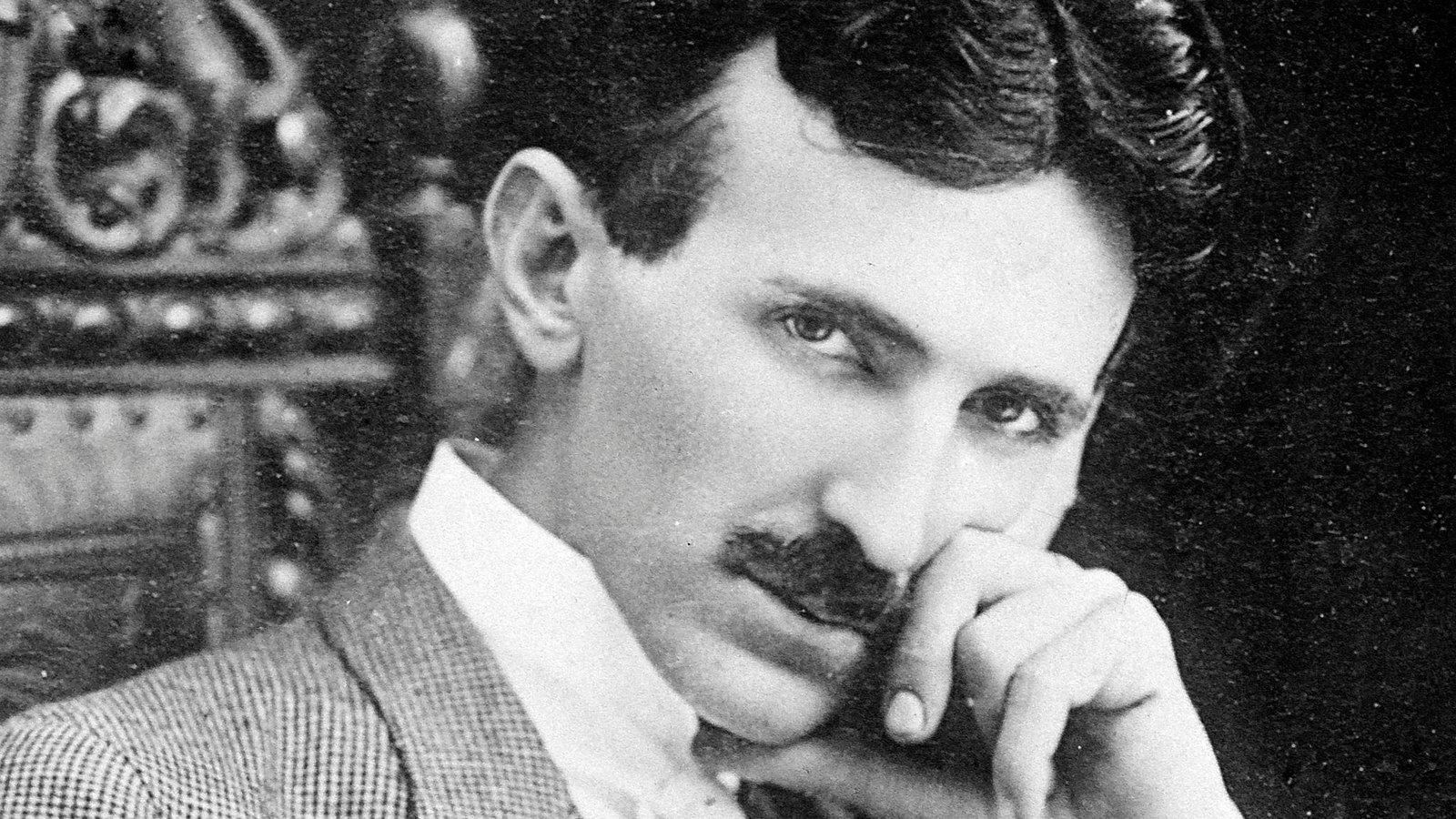Nikola Tesla

Tesla's life raises the question: what do we owe to our visionaries? He gave us the power grid, but died broke. He dreamed of wireless energy, but was shut down for dreaming too big.
Biography
Nikola Tesla was born on July 10, 1856, in the small village of Smiljan, then part of the Austro-Hungarian Empire, now Croatia. His father was a Serbian Orthodox priest, and his mother, though she never went to school, was a clever inventor of household tools. From an early age, Tesla showed signs of a brilliant and unusual mind. After his older brother died in an accident, Tesla began to see vivid flashes of light and images that others couldn’t see. These visions frightened him at first but later fueled his imagination about energy, light, and the unseen forces of nature.
Tesla studied physics, math, and engineering in Europe, first in Graz and then in Prague. While walking one day, he suddenly pictured the design for a new kind of electric motor—one that ran on alternating current, or AC. He drew his idea in the sand with a stick. That spark of imagination would later change the world. Tesla worked briefly for the Continental Edison Company in Paris, fixing power plants, before deciding to move to America in 1884 to chase his dreams.
When Tesla arrived in New York City, he had just a few coins in his pocket and a letter of introduction to Thomas Edison. Edison hired him as an engineer, but their partnership didn’t last long. When Edison refused to pay Tesla for improving his machines, Tesla quit and started working on his own inventions. After struggling for a while, even digging ditches to survive, he found investors who believed in his ideas. Tesla soon earned dozens of patents for his alternating current system, which could send electricity over long distances safely and efficiently.
Tesla teamed up with George Westinghouse, another inventor who believed in AC power. Together, they went up against Edison in what became known as the ‘War of the Currents.’ Tesla’s system won. His technology powered the 1893 World’s Fair in Chicago, lighting up the night sky with thousands of bulbs and proving that AC was the future. Just a few years later, his designs helped create the first hydroelectric power plant at Niagara Falls, bringing electricity to cities miles away.
Tesla’s mind never rested. He invented the Tesla coil, experimented with X-rays and wireless communication, and even demonstrated a radio-controlled boat long before remote controls were common. His biggest dream was to transmit power wirelessly across the world through a giant tower called Wardenclyffe. He imagined a planet where anyone, anywhere, could access free energy. But investors, worried there was no profit in it, withdrew their support, and the project was abandoned.
In his later years, Tesla lived alone in a New York hotel, cared for stray pigeons, and made bold claims about inventions that might stop wars or create earthquakes. Many people thought he was strange, but his curiosity never faded. When he died on January 7, 1943, he was nearly forgotten. Yet after his death, scientists rediscovered how far ahead of his time he really was. Today, his name lives on in the Tesla coil, the unit of magnetic strength, and even in the electric cars that bear his name. The man who dreamed of lighting the world finally got his wish.
Nikola Tesla imagined a world powered by invisible forces, and then built it. He gave us alternating current, wireless communication, and a vision of energy that belonged to everyone. His story reminds us that true innovation often begins with ideas others call impossible. Even when his inventions didn’t make him rich, they made the world brighter. Tesla teaches us that the future belongs to the dreamers who refuse to stop imagining what’s next.
?
What made Tesla’s AC system superior to Edison’s DC system?
How did Tesla’s early radio work compare to Marconi’s?
Why was Tesla’s Wardenclyffe Tower shut down—and what did it represent?
In what ways did Tesla’s mental health affect his life and work?
What inventions of Tesla’s are still in use today?
Why did Tesla fall into obscurity despite his revolutionary contributions?
What can Tesla’s story teach us about the relationship between creativity, capitalism, and legacy?
Dig Deeper
While Edison is known as the inventor of the century, Tesla is only acknowledged as a paragraph in today's history books, forgotten, and unappreciated.
Discover more

Steve Jobs
Steve Jobs, the visionary co-founder of Apple Inc. who revolutionized personal computing, mobile communication, music, and digital design.

Tim Berners-Lee
Inventor of the World Wide Web, Tim Berners-Lee showed us that one idea, shared freely, can change the lives of billions.

Leonardo da Vinci
Leonardo da Vinci reshaped art and inspired technological innovation for centuries.
Further Reading
Stay curious!
